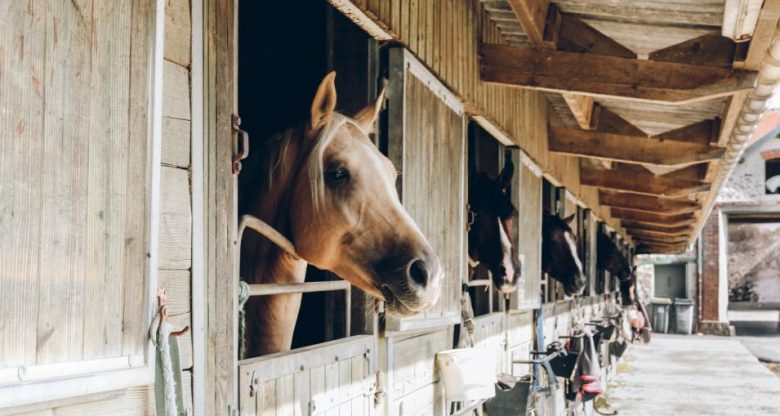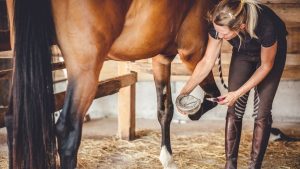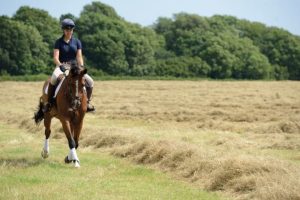Stable maintenance is an important part of caring for your horse as it directly affects the horse’s health, well-being, and abilities. Good maintenance keeps the environment clean and safe, reducing the risk of illness or injury. This detailed guide explains the most important things you need to do to keep your horse in good condition. It covers topics such as planning, cleaning, air circulation, and daily tasks.
1. Design and Layout Unchanged
A well-built stable is the basis of good maintenance. When planning and caring for your horse stable, keep the following in mind:
- Ventilation: A healthy environment must have sufficient ventilation. Make sure there is sufficient airflow in the stable to prevent dust and hazardous gases from accumulating. You can improve air circulation by adding windows, vents, or fans.
- Lighting: Both horses and those working in the stable benefit from natural light. Add windows and skylights to the stables to let in as much natural light as possible during the day. Additional artificial lighting should be used at night.
- Type and size of stables: Provide horses with a stable large enough so they can move around easily. The plan should make it easy to feed, clean, and provide veterinary care to animals. When building your stable, make sure you use durable materials that are suitable for everyday use.
- Floors: To prevent people from getting hurt, choose slip-resistant flooring materials. Clean and repair the floors regularly to ensure the safety and comfort of your horse.
2. Maintenance Work to be Carried Out Daily
Routine grooming is important for your horse’s health and happiness. Add the following to your schedule:
- Feeding: Develop a feeding plan based on each horse’s nutritional needs. Clean and disinfect food and water buckets daily to keep areas where animals eat clean.
- Cleaning stables: Remove contaminated bedding, manure, and hay that the horses have not eaten every day. To stop the spread of disease, thoroughly clean and disinfect your stable regularly.
- Care: Grooming your horse regularly will not only keep it looking great but will also help you detect any health problems. Groom horses remove dirt and loose hair and examine their bodies for wounds or signs of illness.
- Presence: Give your horse regular time to run freely in a safe paddock or pasture. Turnout allows animals to move naturally, connect with others, and keep their minds active.
- Health Checks: Monitor your pet’s health daily for signs of weakness, swelling, or strange behavior. When health problems are caught early, your vet can treat them quickly.
3. Weekly and Monthly Maintenance Tasks
In addition to the daily tasks, the following maintenance tasks should be performed weekly or monthly:
- Change the bedding: To keep things clean and prevent ammonia odor from building up, change your bedding regularly. Choose a suitable sleeping material, such as straw or wood shavings, and make sure it is deep enough for comfort.
- Deep cleaning: Perform a deep cleaning of the entire stable once a week. This includes cleaning surfaces, scrubbing walls, and entering small spaces.
- Clean your horse equipment: Clean and maintain your horse equipment regularly to ensure it lasts and functions properly. Look for signs of damage or wear and repair or replace the parts you need.
- Pasture maintenance: If you have pasture on your property, you should mow it regularly, remove weeds, and inspect fences. This helps keep your horse safe and healthy when he is outside.
- Equipment Inspection: Look for signs of damage or wear on stabilization equipment such as barn doors, latches, and sinks. Repair or replace damaged equipment immediately to prevent accidents.
4. Seasonal Factors to Consider
As the seasons change, you can adjust your routine for consistent care:
- Winter: Make sure your horse has adequate bedding and protection to stay warm. Prevent water sources from freezing and provide them with more food to meet their higher energy needs.
- Spring: Be aware of any damage to pastures from winter weather and focus on managing it. Look for signs of injury to your horse’s hooves from moisture and change his tuning plans if necessary.
- Summer: Take measures to keep flies and other insects away. Make sure the horse gets rest and enough water to stay cool. Watch for signs of thirst and vary how much they eat if you notice signs of thirst.
- Fall: Check and repair stable insulation in preparation for cooler weather. When feed quantity and availability change, feeding patterns must be changed.
Conclusion
Keeping your horse in good condition is an ongoing task that directly affects the health and well-being of the horse in your care. By doing these things regularly you can ensure that your horse’s environment is clean, safe, and comfortable, which will improve his overall health and performance. Regular inspections, prompt repairs, and a proactive approach to healthcare can support a thriving and stable business.
FAQs
1. Why is it important to keep your stables in good condition?
The health and well-being of horses depend on good stable care. It keeps places clean and safe, improves their overall health and well-being, and reduces the risk of illness or injury.
2. How often should I clean my horse’s stable?
The stables should be cleaned daily to remove dirty bedding, manure, and uneaten hay. The entire stable must also be thoroughly cleaned every week to keep it clean.
3. Which bedding material is best for stables?
Which bedding you should use depends on your taste and the needs of your horse. Straw, wood shavings, or a mixture of both are common choices. It is important to choose materials that are comfortable, quick-drying, and easy to clean.
4. How do you prevent insects and flies from entering a stable?
Flies can be controlled with fly traps, insect repellent sprays, and regular removal of droppings. Correctly removing litter and keeping the stable clean is important to keep insects out of the stable and the surrounding area.
5. What are some signs that a horse in a well-maintained stable is healthy?
Horses in well-kept stables have shiny coats, clear eyes, and a good appetite. They can move freely without obstacles and the living area is neat and clean.
6. How do you ensure sufficient air circulation in your stable?
Add windows, vents, or fans to your stable floor plan to ensure good air circulation. Clean the vents regularly to keep dust out and ensure your horse is in a healthy environment.



